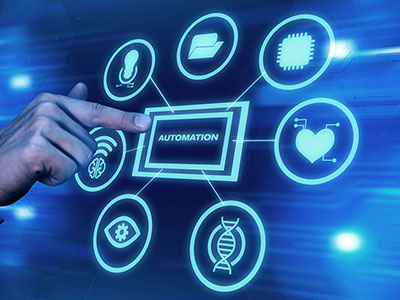
Data Analytics – How to Leverage RPA and AI to a Greater Extent?

Table of Contents
Robotic Process Automation (RPA) has transitioned from emergent technology to a must-have digital transformation tool for enterprises worldwide, with 93% of organizations surveyed by “The Economist” agreeing that automation kickstarts digital transformation. Currently, RPA is being used by a growing number of businesses to simplify routine business procedures in a cost-effective and non-invasive manner. On the other hand, big data and analytics play a significant role in decision-making, pattern detection, and a variety of other business-related tasks.
Talk to Our Automation Expert!
+91 855-975-9735
Want to experience Intelligent Automation in Action or Need help Building the Right Automation Plan?
When you pair RPA with AI, advanced data processing and deep learning tools, you can reap even more market benefits. Companies that use RPA and analytics to their advantage will be well ahead of the competition in performance, operating expense, and eventually customer loyalty.
Harnessing the Synergy of AI and RPA and Data Analytics: Essential Use Cases
Using RPA for Data Entry, Integration, and Migration
Due to a lack of system integration, business users generally manually enter data from documents such as invoices into one system before rekeying the same data into another. Users in analytics programs have also had to manually sort over data to find address fields, postal or ZIP codes, or names that were either missing or duplicated in previous entries. Manual data cleansing and record deduplication can be time consuming and error-prone.
IT (Information Technology) and business users in charge of data cleansing processes must cope with time-consuming administrative tasks that considerably hinder company operations. However, if this analysis remains incomplete, business operations will be disturbed, and the accuracy of analytics outputs would suffer due to insufficient data consistency.
RPA can be used to create and manage well-structured and accurately classified data across business systems, as well as to generate data lakes for data scientists to develop complex Machine Learning models from. The RPA software robots can interact with one or more software applications. In this data cleansing and analytics example, RPA can collaborate with Big Data analytics toolkits to assist organizations in the following ways.
- Data entry can be fully automated – no more manual keying or file sending.
- Automated data migration between disparate enterprise applications e.g., System migrations during mergers or acquisitions.
- Automated data monitoring – RPA can continuously check for data anomalies and improve data consistency without human involvement.
- Automated data deduplication and retrieval of new data streams – such as IoT computer logs and other system-generated data.
Although RPA's primary goal is to automate transactional data entry and save time for end users, it can also assist with routine IT processes, such as preliminary data cleansing before analytics.
Using AI and RPA for Data Analytics
In addition to seamlessly transferring data across enterprise systems, RPA is renowned for its exceptional capabilities in data aggregation, providing better data sources for advanced processing algorithms. It is enhancing data analytics and enabling AI & ML technologies, which can further digitize business operations. By leveraging advanced data analytics software to analyze the data generated by RPA, organizations can gain deeper insights into their processes and workflows. This analysis enables them to model process improvements accurately and identify precise opportunities for process optimization.
RPA automates and digitizes commercial processes. This means that automating the procedure yields more data than performing it manually. This strategy removes subjectivity from manual process assessment, allowing firms to make transformational decisions that match business objectives and strengthen their competitive advantage.
RPA data can then be subjected to a variety of data analysis techniques to further enhance these operations. Here are some of the use cases for RPA-generated data:

Machine Learning
By employing machine learning models, we can identify the elements that have a significant and measurable impact on a process. If we feed the audit trails of RPA processes into various AI and ML algorithms, we can obtain prescriptive solutions for optimizing these processes.
Process Mining
RPA data can be leveraged to visualize the entire process, leading to a deeper understanding, and vice versa. Process Mining applications can generate the necessary data to select the most suitable processes for RPA implementation.
Process Simulation
In complex and repetitive business processes, it can be challenging to determine the effects of even minor improvements. However, by utilizing process data to define process requirements and simulate realistic scenarios in automated systems, it becomes straightforward to run a simulation program and assess the potential impact of various scenarios.
Summing Up!
In essence, embracing RPA offers the advantage of adhering to a set of rules to collect disparate and disjointed data. This ensures that the gathered data is more organized and consistent, making it more valuable for those seeking to access and utilize it. Simultaneously, software robots monitor and report their own behavior, providing valuable insights. Additionally, RPA can be leveraged to analyze and make sense of vast volumes of data. This creates a virtuous cycle where RPA and Data Analytics mutually enhance each other, ultimately benefiting the organization.
If you would like to know more about AIRPA’s automation solutions, our chief RPA Engineers can help take your enterprise to the Next Level.
Popular Tags:
Related Articles

How Automation and AI are Reshaping the Fintech Landscape
Is AI the driving force behind fintech's rapid evolution?





